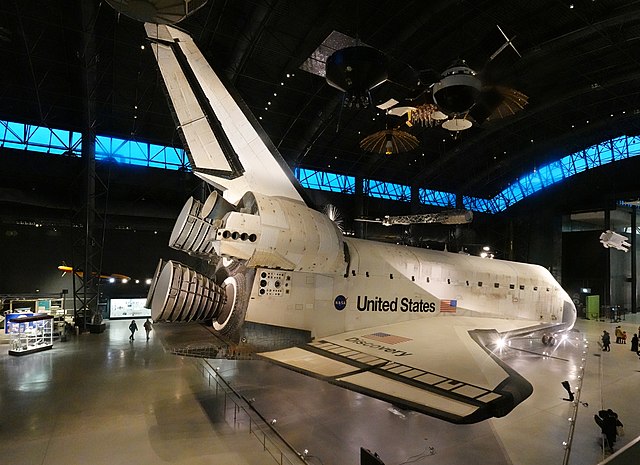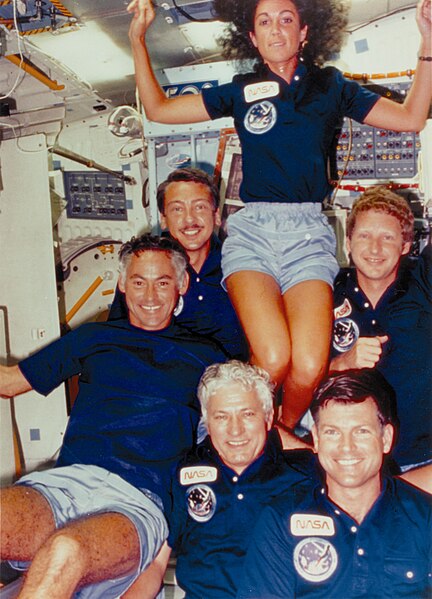STS-33 was a NASA Space Shuttle mission, during which Space Shuttle Discovery deployed a payload for the United States Department of Defense (DoD). It was the 32nd shuttle mission overall, the ninth flight of Discovery, the fifth shuttle mission in support of the DoD, the seventh post-Space Shuttle Challenger disaster mission and the last Shuttle mission of the 1980s. Due to the nature of the mission, specific details remain classified. Discovery lifted off from Launch Complex 39B at Kennedy Space Center (KSC), Florida, on November 22, 1989, at 7:23:30 p.m. EST; it landed at Edwards Air Force Base, California, on November 27, 1989, at 7:30:16 p.m. EST.
Discovery in orbit; in-flight photography on this Department of Defense (DoD) support mission is limited.
Back row: Sonny Carter and John E. Blaha Front row: Kathryn C. Thornton, Frederick D. Gregory, Story MusgraveSpace Shuttle program← STS-34 (31)STS-32 (33) →
Launch of STS-33
The shuttle's wing and Earth's horizon
Space Shuttle Discovery is a retired American spacecraft. The spaceplane was one of the orbiters from NASA's Space Shuttle program and the third of five fully operational orbiters to be built. Its first mission, STS-41-D, flew from August 30 to September 5, 1984. Over 27 years of service it launched and landed 39 times, aggregating more spaceflights than any other spacecraft to date. The Space Shuttle launch vehicle had three main components: the Space Shuttle orbiter, a single-use central fuel tank, and two reusable solid rocket boosters. Nearly 25,000 heat-resistant tiles cover the orbiter to protect it from high temperatures on re-entry.
Discovery in orbit in 2011, during STS-133, the orbiter's final flight
Space Shuttle Discovery at the Steven F. Udvar-Hazy Center
Discovery rollout ceremony in October 1983
On the maiden voyage of Discovery: Judith Resnik, Henry Hartsfield, Michael L. Coats, Steven A. Hawley, Charles D. Walker, and Richard M. Mullane








